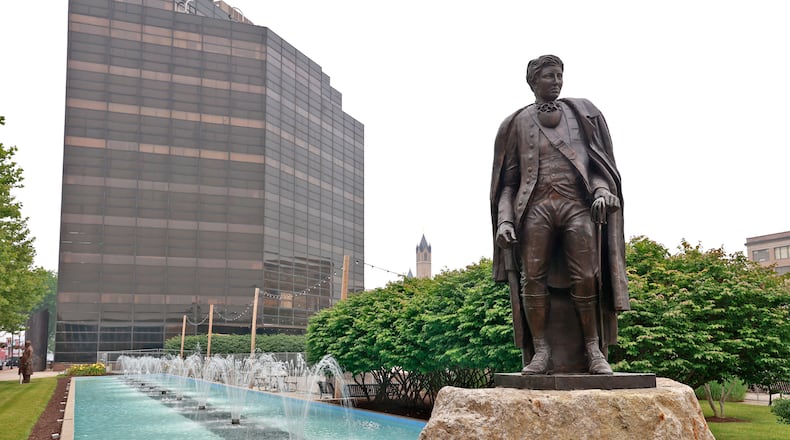George Rogers Clark
Clark was born in Albemarie County, Virginia in 1752.
He was a surveyor who became the highest-ranking military officer on the northwestern front during the Revolutionary War.
During an apprenticeship with a surveyor, Clark traveled to Kentucky, where he fell in love with the area. This love led him to act when the Revolutionary War started. The war took him to areas throughout Kentucky, Indiana and Ohio.
Clark was an imposing figure. He was tall with red hair and powerfully built with a commanding personality. He quickly gathered a small group of men and joined the fight, winning battle after battle as his militia grew.
Credit: Barbara J. Perenic
Credit: Barbara J. Perenic
Clark County and George Rogers Clark Park
George Rogers Clark Park is located on the site where the Battle of Peckuwe, also known as the Battle of Piqua, was fought and won by Clark in 1780.
Fought on Aug. 8, 1780, the Battle of Peckuwe was, as the historical marker at the site says, “the largest Revolutionary War battle fought west of the Alleghenies.”
Credit: HANDOUT
Credit: HANDOUT
Clark led more than 1,000 soldiers and militia into that battle. He was 28 at the time.
The battle lasted all afternoon. The Americans won, but not without significant casualties on both sides. The battle kept the British from opening an additional front that might have had disastrous results for the small continental Army.
When the war ended in 1783, Clark served as chairman to the board of commissioners that allotted lands to those soldiers who had taken part in his 1778 and 1779 campaigns.
Ohio’s government authorized the creation of Clark County on March 1, 1818.
Credit: Bill Lackey
Credit: Bill Lackey
George Rogers Clark Park was established in 1930 in honor of Clark and as a memorial to the battle.
Now the park plays host to a quiet atmosphere with many natural trails, scenic waterways and an open lake.
The park is also home to the annual Fair at New Boston, where historical re-enactments from the 18th century take place, including the Battle of Peckuwe.
Credit: Bill Lackey
Credit: Bill Lackey
About the Author




